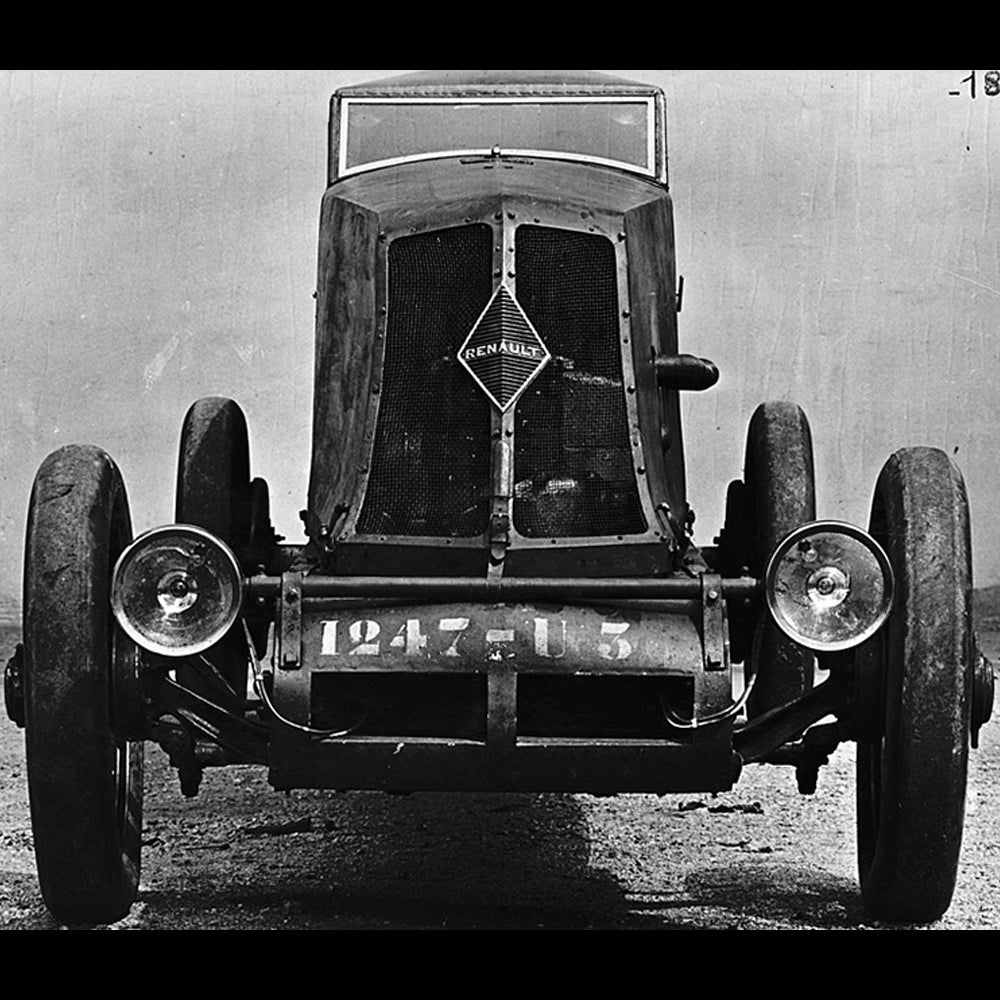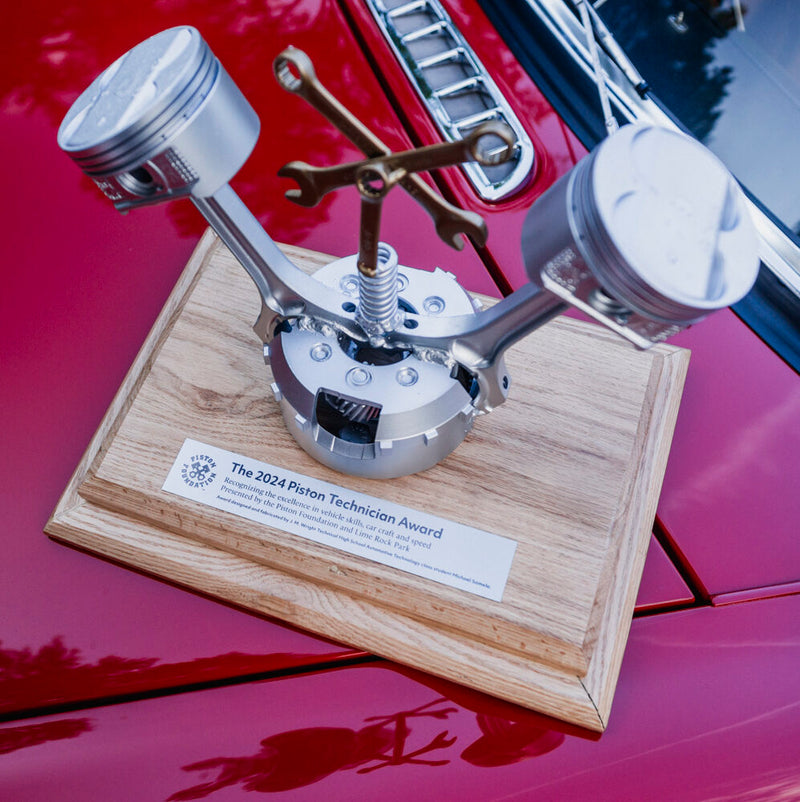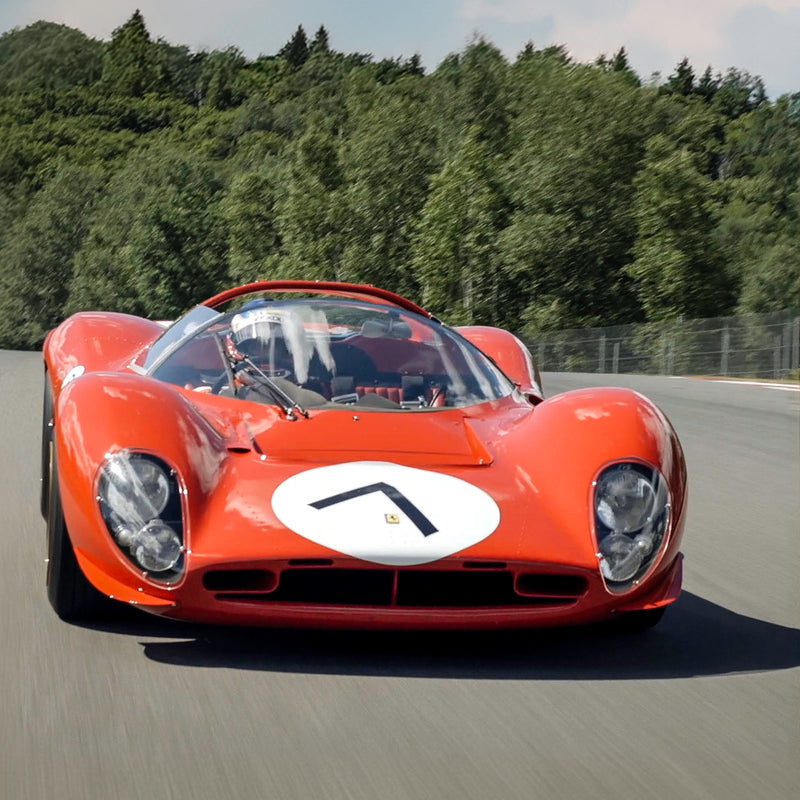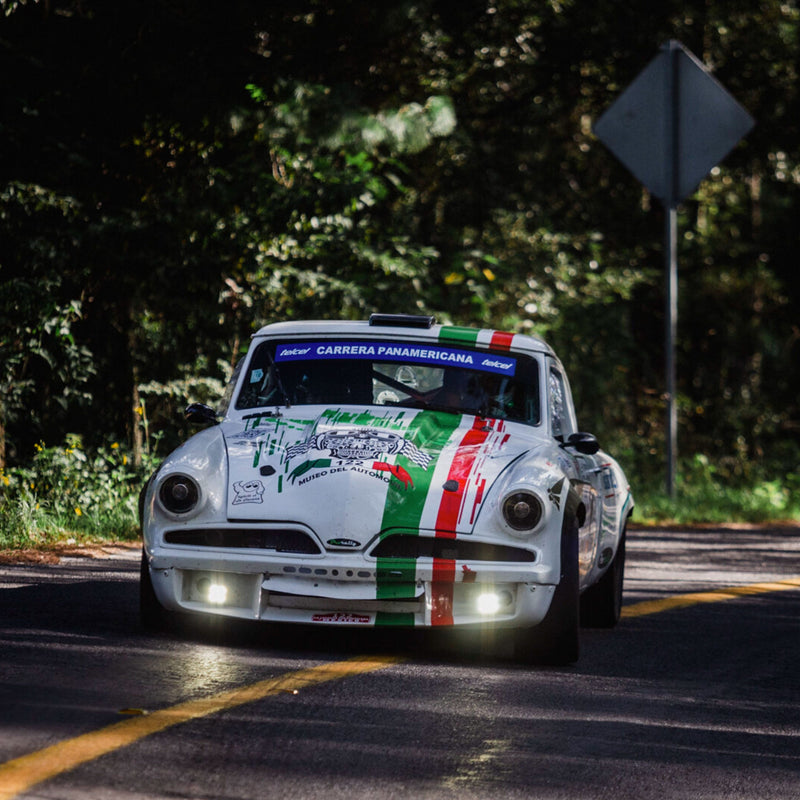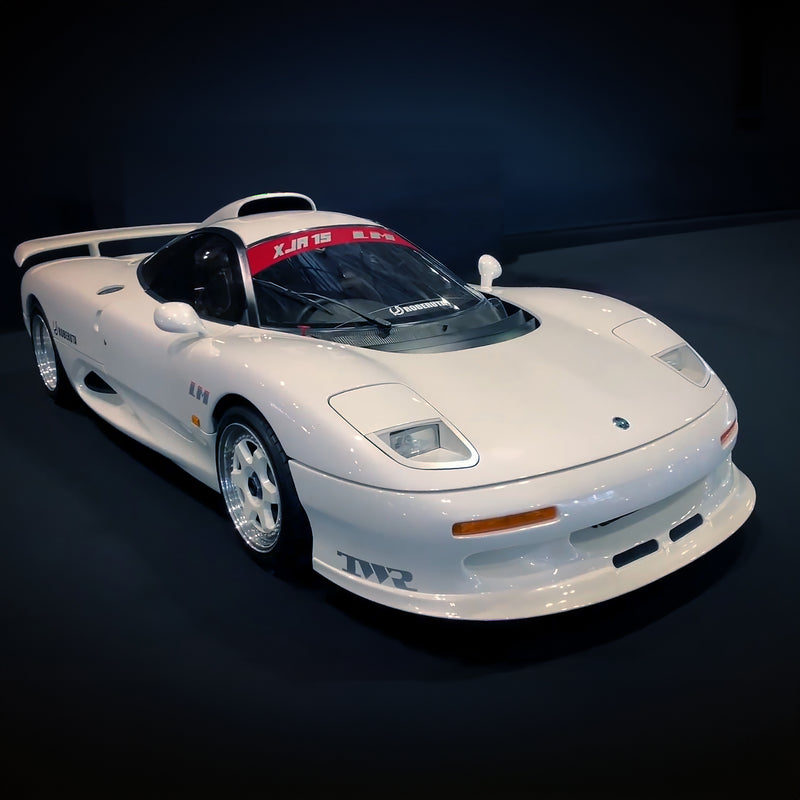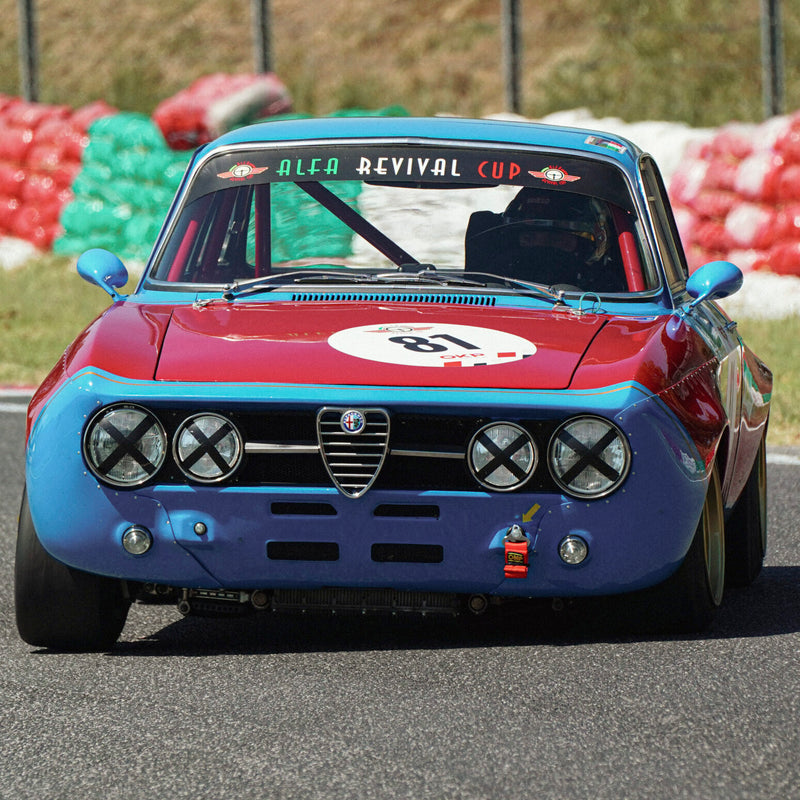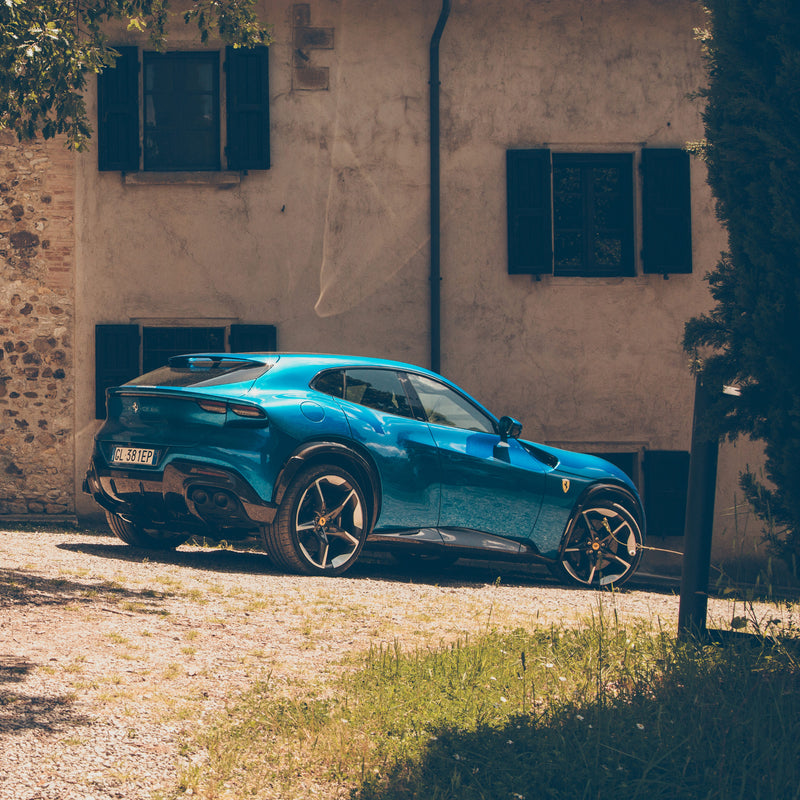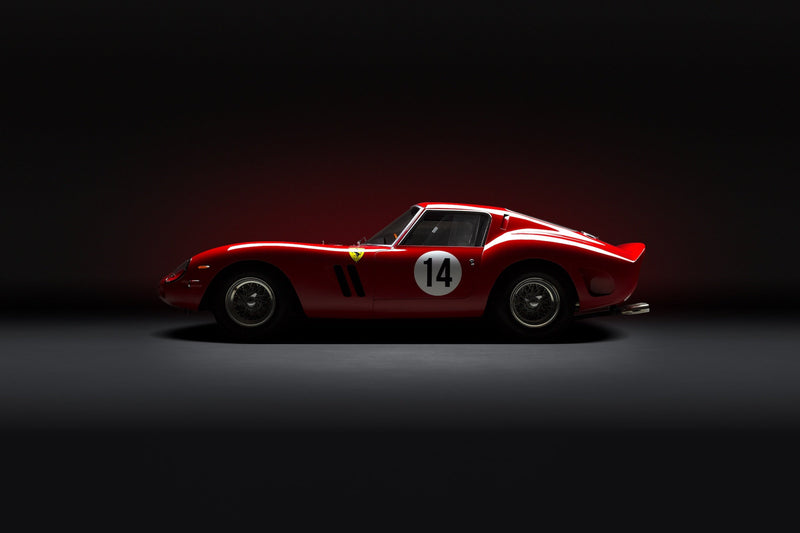During the dawn of the motorcar, automotive dinosaurs ruled the earth. The automobile was still a relatively new invention when these monstrous, smoke belching mastodons roared across great banked racetracks and smooth beaches. Piloted by fearless leather helmeted young men, these cars and their jockeys became legends. When it came to the race cars of this bygone era, bigger was usually faster, and the 1926 Renault 40CV Type NM was one of the fastest of them all.
Looking like a wheeled coffin intent on running someone down, the 40CV NM was built to demolish speed records with brute force. The NM was a custom, single-seater variant of Renault's large 40CV touring car. The NM's distinctly long hood and raked front grille was due to the positioning of the radiator behind the engine.
The engine in question is as industrial and menacing as the car it powers. Displacing a mind-boggling 9.12 liters (556 cubic inches), the straight six was good for a mere 140 horsepower. (Keep in mind that a contemporary 1928 Dodge Victory Six made only 52 horsepower.) Nonetheless, it was able to propel the NM to a top speed of over 120 miles per hour.
Changes in displacement rules and common sense marked a shift towards smaller race cars. Bugatti's highly successful Type 35 series showed that light-weight construction and ingenuity could be a match for stump-pulling brute force. Later, more lithe race cars would soon eclipse the 40CV NM's performance, but few could ever match it for sheer presence.







Image Sources: renault.com, leblogauto.com, leblogauto.com, renaultclassic.com, pixauto.net, supercars.net


